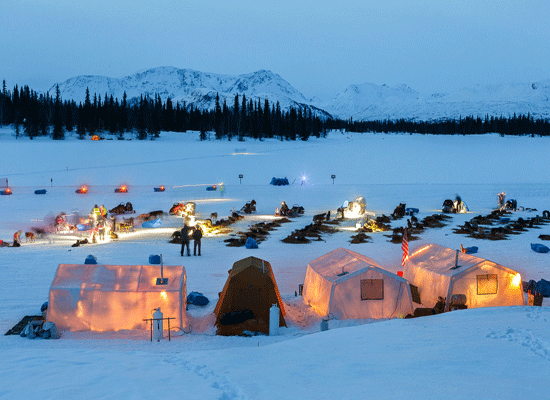This website uses cookies so that we can provide you with the best user experience possible. Cookie information is stored in your browser and performs functions such as recognising you when you return to our website and helping our team to understand which sections of the website you find most interesting and useful.
The Wild Interior of Alaska
There is often so much advertised about Finland, Norway, Sweden, and Iceland for anyone thinking of travelling to the Arctic Circle, but not a huge amount pushed towards Alaska and Greenland. So, we thought we would take some time to tell you about the ‘Wild Interior’ of Alaska. A stunning wild and remote place for true adventurers to explore and travel to. Interior Alaska is the central region of Alaska’s territory and is largely wilderness made up of forest and mountains. It is often referred to as the being Alaska’s heartland and offers a truly wild and remote holiday, adventure destination within Alaska. The area is largely made up of the native people called Alaskan Athabaskans which are native North Americans. The area is home to Fairbanks which is Alaska’s second largest city and is in the Tanana Valley. Other towns include North Pole which is Southeast of Fairbanks and was largely built based on there being two oil refineries positioned there. This region has primarily built on gold mining, farming and gold trapping and much of this diverse history still echoes through the area and is a fascinating addition to any luxury Alaska holiday.

The incredibly diverse and culturally rich city of Fairbanks, including the Museum of the North which exhibits Alaskan art, history, and science. The University of Alaska campus, with its contemporary style is a part of this quirky city. Other cultural experiences on offer include the Creamers Field Migratory Waterfowl Refuge. This is a 2,000-acre bird sanctuary located in the Northern Star area of the city. It is considered locally and around the world, to be an important part of migrating birds’ journeys and the area is of course heavily protected – but 100% worth a visit to see some of the rarest migratory birds as well as the rarest resident birds such as the McKay’s bunting, a wonderful little songbird, but very rare. Fairbanks is also the home of the “Blue Babe” – North Americas first frozen mummified remains of an ice age Steppe Bison. It was discovered by a family back in 1979, who upon melting back the ice, soon realised this was a special find. They soon called upon the help of a top palaeontologist – Dale Guthrie from the University of Alaska – who upon analysis found large wounds on its back and neck, probably from an American lion, and would have dies from this during a very cold winter 36,000 years ago. Due to the cold, vultures and carrion birds alike could not clean up the now frozen flesh, and there the “Blue Babe” stayed, frozen in time.


The Northern lights are also a huge phenomenon that occurs frequently – more clearly during the winter months. The best time to visit Fairbanks for the northern lights is between August and April and is visible four out of five nights if the sky is both clear with as little light pollution as possible. This region is also home to the amazing Denali Mountain which at 200,000 feet is North America’s highest point. The Denali National Park and Reserve which offers wild and diverse landscapes of breath-taking beauty over six million acres. It offers ample scope for wildlife spotting and home to wolves, grizzly bears, caribou, and moose. The Park is split by one single road, about 92 miles long. Home to the River Savage which has been carved out by thousands of years of glacier erosion and a prime example of braided river (meaning a network of river channels separated by small, temporary islands and from above, almost looks like braided hair!).

Interior Alaska Has been known to experience some extreme temperatures and in low lying areas temperatures have been known to drop to -50/-60 degrees Celsius, some of the lowest recorded in the state. For half of the year and during the Winter months much of the ground is covered in powdery snow. It is therefore crucial to come prepared! It is also worth noting that like so many subarctic regions the months of May through to July experience very little night-time sky. In return the harsh winter months of November through to January experience daylight. Plan your trip to the cultural, historical and fascinating country of Alaska, it will be a trip of a learning lifetime to be sure.




